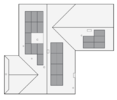PG&E (San Jose Clean Energy) customer. I will be moving into a new home in the next few months and want to install solar as soon as possible to start saving money on my energy costs. I've settled on Tesla solar panels and I currently already drive a Model 3 with 2 years of free supercharging.
In the next two years, I think 4.08kW system should cover most of my electricity needs, but should I install 8.16kW to future proof? I estimate that my energy bill will be approx $100-$130/month during the next two years. Based on Tesla savings estimation, 4.08kw will cover $92 of the estimated ($100-$130/month) energy bill each month. I plan to replace the gas wat/er heater with a hybrid heater and also replace the gas cooktop with induction. I will likely need to start charging at home once my free supercharging ends and my partner will likely get an EV 5-7 years from now. What would you do in my situation? 4.08kW will cover the majority of my energy needs while 8.16kW system will definitely be oversized but in 3-5 years my energy needs to increase due to two EVs. Not sure whether it makes sense financially to install 4.08kW and install add-on panels later on, or just go big at the beginning with 8.16kW. I'd love to get a powerwall but from ROI perspective it doesn't seem to save any money and more for backup power.
As I understand it, there is a minimum $10/month bill with PG&E even if I cover all my energy needs from solar. But San Jose Clean Energy also provide 4.19cents/kW for any excess (
Rooftop Solar - San Jose Clean Energy)
Will the $ generated from excess energy generated be sent to me via a check or does it stay as a credit on the power bill and rolls over into future years until it can be consumed? If I receive a check, then technically the excess power I generate can pay towards the $120 annual minimum bill?
Should I submit an order for solar as soon as I move in, or wait a few months to see my energy usage trends?




